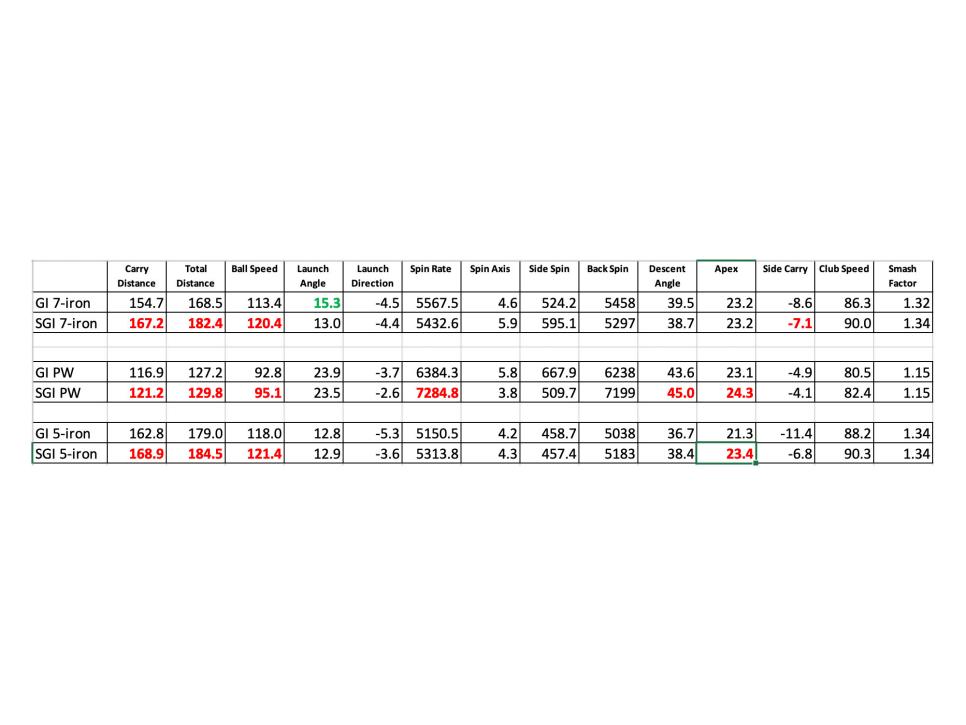Why you need to rethink what Super Game Improvement irons can do for you – Australian Golf Digest

- by Admin
- September 12, 2024

We here in the equipment department at Golf Digest don’t really believe it’s our place to tell you precisely what to do. We’re just presenting information, and we invite you to investigate solutions and take action with a foundation of knowledge that leads you to a better game.
But sometimes we uncover a little bit of info that requires a moral obligation to encourage immediate action. Like this nugget: Super Game Improvement (SGI) irons, a category of clubs that you most likely have dismissed as targeting beginners or octogenarians or both, might be better for your game than Game Improvement (GI) irons. And we have the data to prove it.
Specifically, when it comes to higher handicappers and SGI irons, if you haven’t tried the irons in this category yet, do so. Now. Our data from the last round of Hot List testing suggests that if your handicap is higher than 9, SGI irons shoud be very much in play when you’re choosing clubs. Fact is, you might be missing out.
When we look at the data recorded from the Rapsodo MLM2 Pro launch monitors during our Hot List testing, our high-handicap players hit SGI irons farther and with less dispersion than GI irons. Now that might not seem all that surprising until you realize that in our Hot List testing, our high handicappers are not a bunch of rank beginners carrying 27.6 indexes. Our high-handicap group largely consists of players in the 10-to-15-handicap range. Traditionally, that’s thought of as the wheelhouse for GI irons. But in our Hot List process, in which players hit 5-irons, 7-irons and pitching wedges from each entry, SGI irons produced better results.
In what ways better?
- With 7-irons, SGI irons flew an average of 12.5 yards farther than the average GI iron. They also produced relatively similar spin rates, peak heights and landing angles. See chart (below).
- The same sort of advantages for the SGI irons also were seen with carry distance on 5-irons (+6.1 yards) and pitching wedges (+4.3 yards). There were no significant differences in launch angles, but spin rates were much higher with the SGI irons in pitching wedges and landing angles were steeper (to better hold greens) with both the pitching wedge and 5-iron.
- Beyond distance, all three irons produced shots that finished closer to the target with SGI irons than with GI irons. With the SGI pitching wedge, shots were 4.1 yards off line vs. 4.9 yards with a GI pitching wedge. On the 7-iron, the SGI was 7.1 yards off line, better than the GI at 8.7 yards. Most impressive: SGI 5-irons were 6.8 yards off line, while GI 5-irons were 11.4 yards off the mark. And this also makes sense: SGI irons provide more forgiveness as the irons get longer.
Worth noting: Our high-handicap group included players across all age ranges from their 30s to their 60s, as well as swing speeds with the driver from the 80s to more than 110 miles per hour.
Hot List: The Best Super Game Improvement irons of 2024.
So what’s going on with SGI irons? The simple answer is they are consistently being designed to fulfill their mission, which is to make it easier to launch the ball higher and hit it farther. These irons do this in a number of ways, including wider soles with more weight low to push the center of gravity down. Those soles also provide more forgiveness on fat shots. That’s especially true for the those models that are designed much like full-hybrid sets. Several SGI irons also are now designed with slightly weaker lofts to make them easier to launch. As well, generally speaking, SGI irons feature lighter shaft weights that also can help to increase distance. But it’s also true that regardless of the player or the iron design, lower-lofted irons are difficult to launch properly. Our recent study of average golfers at the Hot List saw many struggling to launch 5-irons optimally because of their extreme low lofts in recent times.
Because of their size and shape and use of more multiple materials, SGI irons also generally are more stable on off-center hits so, again, your worst hits produce more playable distance and direction. Also, because of their larger size and often ultra-thin face constructions, they feature a larger area of the face that produces the highest face-flex for more potential ball speed.
There was one area in our Hot List testing where our high handicappers found SGI irons were trailing GI irons. In our process, our players rate each club for “Look” under the criterion of Look/Sound/Feel, and GI irons received slightly higher scores there. That seems a likely conclusion because most golfers prefer clubs that look more like jewelry than hand tools. But here’s another way to look at clubs: Is the ball going where you want it to go? And it also could be having a positive effect on the look of your scorecard. Does any other “look” really matter?
This article was originally published on golfdigest.com
The Latest News
-
December 29, 2024Five quick hits: Australia collapse, Jaiswal drops catches and Cummins reviews a review
-
December 29, 202411 of the best spring golf trips you can take – Australian Golf Digest
-
December 29, 2024Viktor Hovland suffers freak holiday injury – Australian Golf Digest
-
December 29, 2024Rohit Sharma must score runs in MCG Boxing Day Test or retire? Mark Waugh’s ultimatum for India captain if he was selector | Sporting News Australia
-
December 29, 2024His cricket was fierce but 156 summers later, has Australia done justice to Johnny Mullagh?





